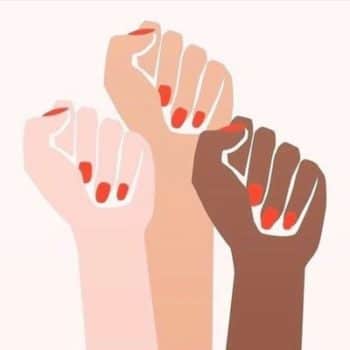When Loyalty to Our Mothers means Loyalty to Our Oppression: How to Break Free

All children are loyal to their mothers. They need her to survive. The more stressed a mother is, the less she can be emotionally present for her child. To the degree to which your own mother’s well-being was compromised, you may have had to develop coping strategies to adapt to your mother’s stress. These strategies may still be unconsciously operating in us even as adults, causing pain and frustration.
As a coping mechanism, children may develop some form of what I call “the impossible dream,” the belief that if only you sufficiently demonstrate your loyalty to your mother through absorbing her beliefs or pain as your own, then she will one day see you fully and love you the way you wanted her to. This is a child’s perspective yet it has enormous enduring power because of it’s early origins in our development.
At a certain point, we have to realize that these strategies did not cause mother to change. They did not work.
Let Go of Loyalty
A major shift can happen when we see that it’s safe to let go of loyalty to the patterns that we thought would grant us the mothering we needed:
- Staying small
- Feeling self-hatred
- Being fearful and hypervigilant
- Believing in scarcity
- Depriving yourself in some way
- Playing the victim
- Solving other people’s problems
- Suppressing your true feelings and responses
These patterns may have been taught to you to some degree by your mother overtly OR you may have learned them through simply observing her behavior. They were likely passed down to her through her own mother and/or her own cultural conditioning. Because we live in a patriarchal society that tells us women are “less than” we all have these beliefs to some degree. (They can be even more damaging if our mother was unhealthy or mentally unstable.) They may be very hard to let go of because on some level, letting go of them feels like letting go of “mother” –and for our unconscious and inner child this can feel like death. For example, if your mother was very fearful, you may have unconsciously taken on her fearful beliefs as a way to feel close to her. Letting go of a fearful approach to life may feel scary as though you are letting go of your actual mother herself. Another example is letting go of self-blame. If you were taught to blame yourself and were rewarded for that, letting go of self-blame may feel like you are betraying your mother.
Because these patterns were associated with being mothered, the patterns themselves begin to unconsciously represent a mothering presence. These patterns may have afforded us temporary approval, validation or acceptance in moments. But now as adult women, they only serve to keep us down. Because they were formed so early in our development, these beliefs and patterns tend to be quite unconscious and can endure for years before we see their origin. The most important thing is to see how these strategies or patterns of behavior did NOT bring us what we most wanted— our mother to show up for us in the ways we needed her to. As we mourn that loss, we can free ourselves to live and act in new ways.
There are 3 parts to letting go of these persistent patterns:
1) Genuinely thank the patterns for the ways they have served you.
Examples:
- Being a striver to get mother’s love may have helped you to achieve a lot in the world.
- Being an emotional caretaker may have helped you to be skilled at tuning into people’s feelings.
- Being controlling or rigid may have helped you to get a lot done.
2) See that what you’re unconsciously trying to achieve through the pattern is impossible.
Perhaps the most powerful part of this process is seeing how no matter how loyal you were to those patterns, they could never bring you the mother you truly wanted and needed. The reason why is because whatever was going on in your family when you were a child was never truly about you. (But that is the only way that children can interpret forms of abandonment or abuse; that it’s about THEMSELVES.) When in reality, it’s really about whatever happened to be going on with the parents which the child had absolutely no control over. The truth is that no matter how good you were as a little girl (no matter how smart, pretty, talented, well-behaved you were, etc.) it never would have changed the family situation in the ways you needed it to change to get what you needed. That’s because the only people who had power in the situation were the adults whose decisions and choices impacted you as child. Whatever was going on in your family environment as a child was not your fault and you had no power to change it.
Accepting how powerless you were as a child is a major step to freedom. Your parents’ inability to give you what you needed had nothing to do with you. Fully letting this in requires grieving and getting support. The real letting go is in the grieving, which makes space for new ways of being in the world that truly nurture and fulfill you.
3) Identify new, positive beliefs or patterns to replace the old, negative ones. Then commit to taking action on those new beliefs.
Examples:
- It’s safe to step through fear and believe in myself (Action step: Soothing yourself through fears as you take a new risk and start a project that requires you to be visible to others.)
- I give myself permission to honor my needs and speak my truth (Action step: Speaking out on your own behalf in a situation in which your boundaries are not being respected.)
- I honor my truth even when those around me disagree (Action step: Doing something that you know is true for you even when others reject you for it.)
The action step gives you a new experience which gives your subconscious a powerful message that is IS safe to act counter to what you learned as a child. In other words, not acting in accordance with the patterns will not cause rejection, humiliation or abandonment the way they could in childhood. In a way, it’s as though you’re bringing your inner child into the present moment, where she CAN experience being supported for who she is, because YOU as your adult self are there for her in the ways your mother could not be. This creates deeper integration within yourself and more detachment and distance from damaging patterns that were unconsciously adopted in childhood. The key here is consistency. Consistent, small steps lead to bigger transformations over time.
It’s important to see how the strategies did not work.
Examples:
- Being really quiet did not cause people to approve of me
- Solving the family problems did not create lasting peace or protect me from rejection
- Being mother’s pet and always agreeing with her did not lead her to see me for who I was as a separate person
- Absorbing mother’s fearful beliefs did not cause me to feel safe
- Staying small and silent did not lead to mother’s approval and validation of me
- Focusing on mother and her problems did not cause her to listen or support me
When we see how these strategies did not work, we can then let go of the unconscious hold they have on us. Usually there is some mourning to do.
When we can really see that ‘the good mother is not coming’ we can give ourselves permission to choose new ways of being and acting in the world that actually bring us fulfillment and joy. Our lives begin to automatically shift around this realization. Rejection of these negative patterns is NOT a personal rejection of your mother. Moving beyond these early patterns is about YOU choosing to heal and create new, healthier ways of living and being in the world. Your mother will view the shift in you as a personal betrayal to the degree that she is closely identified with these patterns in herself. Her response to your divergence from these patterns is a statement of where she is at within herself; it’s not about you. You may see how futile and unhealthy these patterns are in your own life but your mother may not; she may still see them as valid ways of acting in the world. Her opinions do not have to dictate your reality. Let her have her own experience without rushing in to explain or emotionally care-take her; this is a form of respect for her and for yourself.
For generations, wounded mothers have been unconsciously asking their daughters to compensate them for what patriarchal society and their families would not give them: a sense of purpose, control and personal validation. Daughters cannot provide this. It cannot be given, it can only be found within the mother herself; by committing to her own healing and transformation. Breaking this toxic cycle is done by refusing to comply with the unspoken message from a wounded mother: “Do not abandon me by becoming fully yourself.” Woman, you have a right to your own life. Letting your mother have her own experience and healing process is not cruel (as patriarchy would tell us); it is healthy and necessary.
Your full empowerment is impossible in an environment of dysfunctional enmeshment with your mother.
Refusing to carry your mother’s pain as your own is how the cycle of mother/daughter pain transforms.
A healthy emotional separation is what is needed to bring about a new paradigm of harmony and trust between mothers and daughters. As a daughter, you are not causing your mother pain by refusing to carry her burden, you are ceasing to sacrifice yourself to perpetuate her illusions, and in doing so you are actually correcting an imbalance that has plagued your female lineage for generations. The pain she feels is her own and has been under the surface all along. Your refusal to emotionally caretake your mother will offer her the opportunity to take responsibility for herself. Her personality may not like it but you are actually serving her on a much deeper level. Your commitment to your own empowerment actually serves your mother as it opens the way for her to own her power, if she chooses. Mothers who are still steeped in patriarchal beliefs will not be able to see this as the gift that it is. The most important thing is that you know it.
A major shift that happens when your integrity becomes more important than your mother’s opinion of you; you show up powerfully and model a new way of being for others.
Questions for Reflection:
1. Identify one negative, self-deprecating pattern you adopted as a child as a coping mechanism that is also active in you now?
2. What was the original situation that caused you to adopt that negative pattern or belief about yourself?
3. What emotional processing needs to happen for you to truly let go of those patterns? What needs to be faced? What needs to be acknowledged or mourned?
4. What kind of support do you need to process this? What are some ways that you can provide yourself with nurturing and comfort as you emotionally process this?
Art credits: Grace by Joyce Huntington




